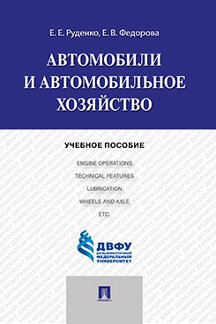|
|
ОглавлениеUNIT I. Automobile. Development of the Automobile. Automobile Industry UNIT II. Components of Automobile UNIT IV. Engine Operation. The Four-Stroke Cycle. The Two-Stroke Cycle Vocabulary. A. B. C. D. E. F. G. H. I, J, K. L. M. N. O. P, Q. R. S. T, U. V. W Для бесплатного чтения доступна только часть главы! Для чтения полной версии необходимо приобрести книгуUNIT VII. LubricationVocabulary: condensed without decomposition – сжатый без разложения boiling point – точка кипения damage – повреждение expansion – расширение grease – жир lubricant – смазка moving parts – подвижные детали properties – свойства specific gravity – удельная масса substance – вещество surface – поверхность vapor pressure – давление пара viscosity – вязкость Introduction of a substance between the contact surfaces of moving parts to reduce friction and to dissipate heat. A lubricant may be oil, grease, graphite, or any substance gas, liquid, semisolid, or solid that permits free action of mechanical devices and prevents damage by abrasion and “seizing” of metal or other components through unequal expansion caused by heat. In machining processes lubricants also function as coolants to forestall heat-caused deformities. Types of Lubricants Lubricants can be classified by their origin animal (e.g., sperm oil, goose grease), vegetable (e.g., soybean oil, linseed oil), or mineral (e.g., petroleum, molybdenum sulfide). From ancient times until the late 19th cent. lubricants were obtained from vegetable oils or animal fats and oils. Today most are derived from mineral oils, such as petroleum and shale oil, which can be distilled and condensed without decomposition. Synthetic lubricants, such as silicones, are of great value in applications involving extreme temperatures. In certain types of high-speed machinery films of gas under pressure have been successfully used as lubricants. Внимание! Авторские права на книгу "Автомобили и автомобильное хозяйство. Учебное пособие" (Руденко Е.Е., Федорова Е.В.) охраняются законодательством! |
||||||||||||||||||||||











